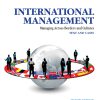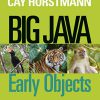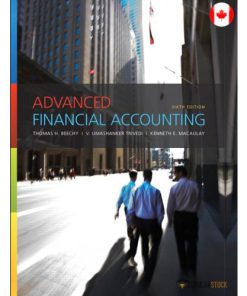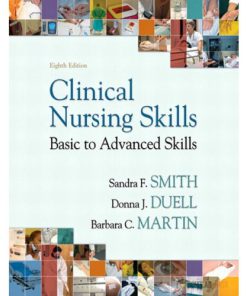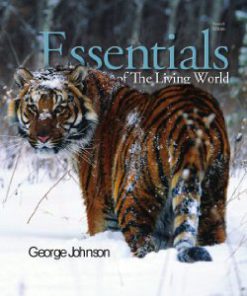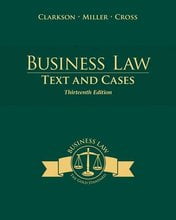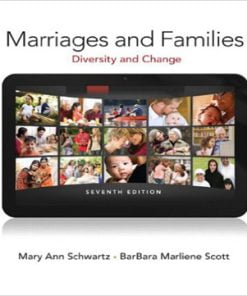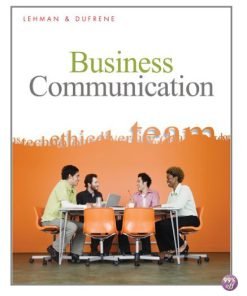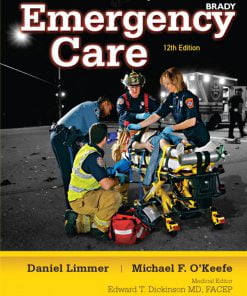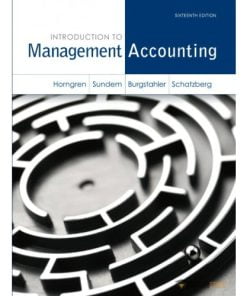Test Bank for Connect College Reading, 2nd Edition
$35.00 Original price was: $35.00.$26.50Current price is: $26.50.
Test Bank for Connect College Reading, 2nd Edition
Sell by: Ava Robinson
SKU: jlvpf225211
Category: Test Bank
Instant download Test Bank for Connect College Reading, 2nd Edition pdf docx epub after payment.
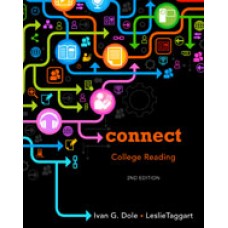
Product details:
ISBN:1133602673
ISBN-13:9781133602675
Authors: Ivan Dole, Leslie Taggart
Taking a holistic approach to developmental reading, CONNECT: COLLEGE READING is an intermediate level book for reading levels 8-10. CONNECT strives to build students’ confidence by showing them that many of the skills needed to become stronger readers are skills they already possess and use on a daily basis. Using popular media as a springboard, Dole and Taggart show students how thinking skills used while watching television or movies can easily transfer to reading. CONNECT’s comprehensive approach includes extensive vocabulary coverage, critical thinking practice throughout, and textbook readings in every chapter to help students master college reading. The second edition includes a full chapter on inferences, enhanced coverage of main idea, and guides for specialized reading situations such as reading visuals, novels, and a guide to taking tests.
Table of contents:
PART ONE: A NEW WORLD OF LEARNING: READING AND STUDYING IN COLLEGE
CHAPTER 1: INTRODUCTION TO READING AND STUDYING: BEING SUCCESSFUL IN COLLEGE
NEW INFORMATION AND SKILLS
What do you need to know about the reading and studying process?
What are the keys to studying college textbooks?
What is comprehension monitoring and why is it important?
How can you be selective as you read and study?
How can you organize as you read and study?
How can you rehearse information to remember it?
What is the SQ3R study system?
How can you adjust your reading rates when you study?
How can you improve your reading speed?
What do you need to do to be successful in college?
Why is it important to set goals?
What are learning preferences?
Chapter Review Cards
How can you find information online?
READINGS
Selection 1-1: “A Mother’s Answer” from The Big Picture: Getting Perspective on What’s Really Important” by Ben Carson and Gregg Lewis (Nonfiction)
*Selection 1-2: “Fire Up Your Memory with Proven Strategies!” from Peak Performance: Success in College and Beyond” by Sharon Ferrett(Student Success)
*Selection 1-3: “The When and How of Preparing for Tests” from P.O.W.E.R. Learning: Strategies for Success in College and Life by Robert S. Feldman(Study Skills)
CHAPTER 2: DEVELOPING A COLLEGE-LEVEL VOCABULARY: A NEW WORLD OF WORDS
NEW INFORMATION AND SKILLS
Why is it important to develop a college-level vocabulary?
What are context clues and how do you use them?
What are word-structure clues and how do you use them?
How do you use a dictionary pronunciation key?
What is figurative language and how do you interpret figures of speech?
Other things to keep in mind when developing your college-level vocabulary.
The most common and helpful roots, prefixes, and suffixes in English come from Latin and ancient Greek.
A word’s etymology (origin and history) indicates the word parts it was created from, including Latin or
Certain punctuation marks in a sentence can signal a definition.
Chapter Review Cards
Test Your Understanding: Using Context Clues, Part 1
Test Your Understanding: Using Context Clues, Part 2
Test Your Understanding: Using Word-Structure Clues, Part 1
Test Your Understanding: Using Word-Structure Clues, Part 2
Test Your Understanding: Interpreting Figurative Language, Part 1
Test Your Understanding: Interpreting Figurative Language, Part 2
READINGS
*Selection 2-1: “Overwhelming Obstacles” from Peak Performance: Success in College and Beyond by Sharon Ferrett (Student Suscess>
*Selection 2-2: “Autism: A Public Health Emergency” from selected Internet Sources (Public Health)
*Selection 2-3: “Thinking in Pictures: Autism and Visual Thought” from Thinking in Pictures: My Life with Autism by Temple Grandin
PART TWO: A NEW WORLD OF UNDERSTANDING: USING CORE COMPREHENSION SKILLS WHEN YOU READ COLLEGE TEXTBOOKS
CHAPTER 3: DETERMINING THE TOPIC
What is the topic of a paragraph, and why is it important?
What are the clues for determining the topic of a paragraph?
Clue 1: Look for a Heading or Title That Indicates the Topic
Clue 2: Look for a Word, Name, or Phrase in the Paragraph That Appears in Special Print
Clue 3: Look for a Word, Name, or Phrase That Is Repeated throughout the Paragraph
Clue 4: Look for a Word, Name, or Phrase Referred to throughout the Paragraph by Pronouns or Other Words
Other things to keep in mind when determining the topic
You should use a name, word, or phrase, but never a sentence, to express the topic. This means you must know the difference between a phrase and a sentence.
You must know the difference between “general” and specific.”
A longer passage has an overall topic.
Checkpoint: Determining the Topic
Chapter Review Cards
Test Your Understanding, Determining the Topic, Part One
Test Your Understanding: Determining the Topic, Part Two <h3READINGS
*Selection 3-1: “Parenting Style: Does it Matter?” from Human Development by Diane Papalia, Sally Olds, and Ruth Feldman (Human Development)
Selection 3-2: “Giving a Speech? If You’re Nervous, You’re Normal!” from Public Speaking for College and Career by Hamilton Gregory (Speech Communication)
*Selection 3-3: “State-of-the-Art and High-Tech Ways of Dealth” from Understanding Your Health by Wayne Payne, Dale Hahn, and Ellen Lucas(Health)
CHAPTER 4: LOCATING THE STATED MAIN IDEA
NEW INFORMATION AND SKILLS
What is a stated main idea sentence, and why is it important?
What is the method for identifying the stated main idea sentence?
Which sentence in a paragraph can be the stated main idea sentence?
First Sentence of the Paragraph
Last Sentence of the Paragraph
A Sentence within the Paragraph
Other things to keep in mind when locating the stated main idea sentence
All stated main idea sentences have certain characteristics in common.
Avoid these three common mistakes when locating the stated main idea
Signal words or phrases can help you locate a stated main idea and locate a stated main idea that is presented as a conclusion.
A longer passage often has an overall main idea that is stated, too.
Checkpoint: Locating the Stated Main Idea
Chapter Review Cards
Test Your Understanding: Locating the Stated Main Idea, Part One
Test Your Understanding: Locating the Stated Main Idea, Part Two
Readings
*Selection 4-1: “Who’s the Boss? Leaders, Managers, and Leadership Style” from Understanding Business” by William Nickels, James McHugh, and Susan McHugh (Business)
*Selection 4-2: “Arranged Marriage: Adventures and Changes” from Marriages and Families: Intimacy, Diversity, and Strengths by David Olson, John DeFrain, and Linda Skogrand (Marriage and Family)
*Selection 4-3: “Concussions: Don’t Shrug them Off” from Selected internet sources (Health)
CHAPTER 5: FORMULATING AN IMPLIED MAIN IDEA
NEW INFORMATION AND SKILLS
What is an implied main idea, and why is it important?
Three formulas for using information in a paragraph to formulate an implied main idea
Formula 1: Add an Essential Word or Phrase to a Sentence in the Paragraph That Almost States the Main Idea
Formula 2: Combine Two Sentences from the Paragraph into a Single Sentence
Formula 3: Summarize Important Ideas into One Sentence or Write One Sentence That Gives a General Inference Based on the Details
Other Things to Keep in Mind When Formulating an Implied Main Idea Sentence
You must always use a sentence—not just a phrase—to express a formulated main idea. This means you must know the difference between a sentence and a phrase.
All formulated (implied) main idea sentences have certain characteristics.
A longer passage often has an implied overall main idea that you must formulate, too.
Checkpoint: Formulating an Implied Main Idea
Chapter Review Cards
Test Your Understanding: Formulating an Implied Main Idea, Part One
Test Your Undersanding: Formulating an Implied Main Idea, Part Two
READINGS
Selection 5-1: Two Artistic Tributes: The Vietnam Memorial and the AIDS Quilt from Living with Art by Rita Gilbert(Art Appreciation)
*Selection 5-2: “Companies Struggle with ‘Inside Jobs’ and Outside Threats” from Management Information Systems for the Information Age by Stephen Haag and Maeve Cummings (Management Information Systems)
Selection 5-3: “Avian Flu: A Coming Pandemic?” from Biology by Sylvia Mader (Biology)
CHAPTER 6: IDENTIFYING SUPPORTING DETAILS
NEW INFORMATION AND SKILLS
What are supporting details, and why are they important?
What is the method for identifying supporting details?
Major and minor details
Other Things to Keep in Mind When Identifying Supporting Details
Watch for clues that indicate a list of details.
Avoid overmarking your textbook by numbering the supporting details in a paragraph rather than highlighting or underlining them.
Listing the details on separate lines in your study notes or on review cards can help you learn the information more efficiently.
Checkpoint: Identifying Supporting Details
Chapter Review Cards
Test Your Understanding: Identifying Supporting Details, Part One
Test Your Understanding: Identifying Supporting Details, Part Two
READINGS
Selection 6-1: “Hold It! You Can Recycle That! Recycling: A Twenty-First Century Necessity” from Environmental Science: A Study of Interdependence by Eldon Enger and Bradley Smith (Environmental Science)
Selection 6-2: “The Life of Buddha” from The 100: A Ranking of the 100 Most Important People in History by Michael Hart (History)
Selection 6-3: “The New Immigrants: Asian Americans and Latinos from Nations to Nations: A Narrative History of the American Republic by James Davidson et al.(History)
CHAPTER 7: RECOGNIZING AUTHORS’ WRITING PATTERNS
NEW INFORMATION AND SKILLS
What are authors’ writing patterns and why are they important?
Transition words that signal the relationship of ideas within sentences and between sentences
Five Common Writing Patterns
Definition pattern
List pattern
Sequence pattern
Comparison-contrast pattern
Cause-effect pattern
Additional Paragraph Patterns
Definition and Example Pattern
Generalization and Example Pattern
Location or Spatial Order Pattern
Summary Pattern
Classification Pattern
Addition Pattern
Statement and Clarification Pattern
Other things to keep in mind when recognizing authors’ writing patterns
Lists and sequences differ in an important way.
Avoid identifying every paragraph as having a list pattern.
Authors often mix patterns in the same paragraph.
A longer selection may contain several patterns and have an overall pattern as well.
Checkpoint: Recognizing Authors’ Writing Patterns
Chapter Review Cards
Test Your Understanding: Recognizing Authors’ Writing Patterns, Part One
Test Your Understanding: Recognizing Authors’ Writing Patterns, Part Two
Reading Selections:
*Selection 7-1: “Viruses: Easily Spread and Ever Evolving” from Connect Core Concepts in Health by Paul Insel and Walton Roth (Health)
Selection 7-2: The Right to Vote: Valued but Under Utilized from We the People: A Concise Introduction to American Politics by Thomas E. Patterson(Government)
*Selection 7-3: “Are you Shopping Smart?” from Personal Finance by Jack Kapoor, Les Dlabay, and Robert Hughes
PART THREE: A NEW WORLD OF READING AND THINKING CRITICALLY
CHAPTER 8: READING CRITICALLY
NEW INFORMATION AND SKILLS
What is critical reading, and why is it important?
What is author’s point of view, and how can you determine it?
What is author’s purpose, and how can you determine it?
What is author’s intended audience, and how can you determine it?
What is author’s tone and how can you determine it?
Other things to keep in mind when reading critically
You should avoid seeing the purpose of everything you read as to inform.
If the author’s purpose is to persuade you to adopt his or her point of view, you should determine which side of an issue he or she favors.
Understanding the author’s tone will enable you to grasp the true or intended meaning, even when the author’s words may appear to be saying something different.
There are two forms of irony: irony in tone and irony in situations.
Sarcasm and irony are not the same thing.
Checkpoint: Reading Critically
Chapter Review Cards
Testing Your Understanding: Reading Critically, Part One
Testing Your Understanding: Reading Critically, Part Two
READINGS
Selection 8-1: From For One More Day by Mitch Albom(Literature)
Selection 8-2: “I Never Made It to the NFL” from The Last Lecture by Randy Pausch with Jeffrey Zaslow(Memoir)
Selection 8-3: “Dispelling the Myths about Millionaires” from Understanding Business by William Nickels, James McHugh, and Susan McHugh (Personal Business)
CHAPTER 9: THINKING CRITICALLY
NEW INFORMATION AND SKILLS
What is thinking critically, and why is it important?
What are facts and opinions, and why is it important to be able to distinguish between them?
What are inferences, and why is it important to make them?
Other things to keep in mind when thinking critically
Facts and opinions may or may not appear together.
Authors sometimes present opinions in such a way that they appear to be facts.
There are other critical thinking skills, such as recognizing propaganda devices and recognizing fallacies, that can also be used to evaluate written material.
Checkpoint: Thinking Critically
Chapter Review Cards
Test Your Understanding: Thinking Critically: Fact and Opinion
Test Your Understanding: Thinking Critically: Making Logical Inferences
READINGSb>
*Selection 9-1: “Taboos and Myths about Conflict and Anger” from Marriages and Families: Intimacy, Diversity, and Strengths by George Johnson (Marriage and Family)
Selection 9-2: “Planet Under Stress: Curbing Population Growth” from The Living World: Basic Concepts by George Johnson (Biology)
*Selection 9-3: “For Better or Worse: Divorce” from Human Development by Diane Papalia, Sally Olds, and Ruth Feldman (Human Development)
PART FOUR: A NEW WORLD OF STUDYING: EFFECTIVE AND EFFICIENT STUDY TECHNIQUES
CHAPTER 10: APPROACHING COLLEGE READING AND STUDYING
NEW INFORMATION AND SKILLS
What is the three-step process for studying college textbooks?
Step 1: Prepare to Read
Step 2: Ask and Answer Questions to Guide Your Reading
Step 3: Review by Rehearsing Your Answers
What are textbook features?
Chapter Introductions and Chapter Objectives
Chapter Outlines
Vocabulary Aids and Glossaries
Boxes
Chapter Summaries
Study Questions and Activities
Other Textbook features
How can you interpret visuals and graphic aids?
How can you interpret visual aids?
Photographs
Diagrams
Maps
Cartoons
How can you interpret graphic aids?
Line graphs
Pie charts
Bar graphs
Flowcharts
Tables
Other things to keep in mind when studying textbook material.
You will benefit from examining the features in all of your textbooks at the beginning of the semester.
Chapter Review Cards
Test Your Understanding: Interpreting Graphic Aids
READING
Selection 10-1: “Living with Stress” from P.O.W.E.R. Learning: Strategies for Success in College and Life by Robert Feldman (Student Success)
CHAPTER 11: PREPARING FOR TESTS: STUDY-READING, REHEARSAL, AND MEMORY
NEW INFORMATION AND SKILLS
How are rehearsal and memory related?
How can you underline, highlight, and annotate your textbooks?
How can you take notes from textbooks?
Guidelines for Outlining
Guidelines for Mapping
Guidelines for Summarizing
Guidelines for following directions
Other things to keep in mind as you prepare for tests by applying
Core Comprehension Skills
When you study, choose the study techniques (underlining, highlighting, annotating, outlining, mapping, summarizing, making review cards or test review sheets) that (a) are appropriate to the type of material you are studying, (b) correspond with how you will e tested on the material, and (c) best suit your learning style.
Learn how to handle outline, summary, and mapped notes questions on standardized reading tests.
Chapter Review Cards
READING
Selection 11-1: “Information Technology, The Internet, and You” from Computing Essentials by Timothy O’Leary and Linda O’Leary (Information Technology)
ESSENTIAL SKILLS REVIEW TESTS
Introduction to Essential Skills Review Tests
Essential Skills Review Test 1
Essential Skills Review Test 2
Essential Skills Review Test 3
Essential Skills Review Test 4
Essential Skills Review Test 5
Essential Skills Review Test 6
Essential Skills Review Test 7
Essential Skills Review Test 8
Essential Skills Review Test 9
Essential Skills Review Test 10
Appendix 1 Glossary of Key Terms
Appendix 2 Master Vocabulary List
INDEX
Instructor’s Guide
</h3
People also search:
Connect College Reading, 2nd Edition
Connect College Reading, 2nd Edition pdf
Connect College Reading
connecticut college academic resource center
reading comprehension connections
|
read write connect a guide to college reading and writing
|
Related products
Sale!
Sell by: Shane Gardner
Sale!
Sell by: Jared Welch
Sale!
Sell by: Ellie Graham
Sale!
Sell by: Ethan Anderson
Sale!
Sell by: Anthony Campbell
Sale!
Sell by: Michael Johnson
Sale!
Sell by: Gavin Barrett
Sale!
Sell by: Spencer Lowe


